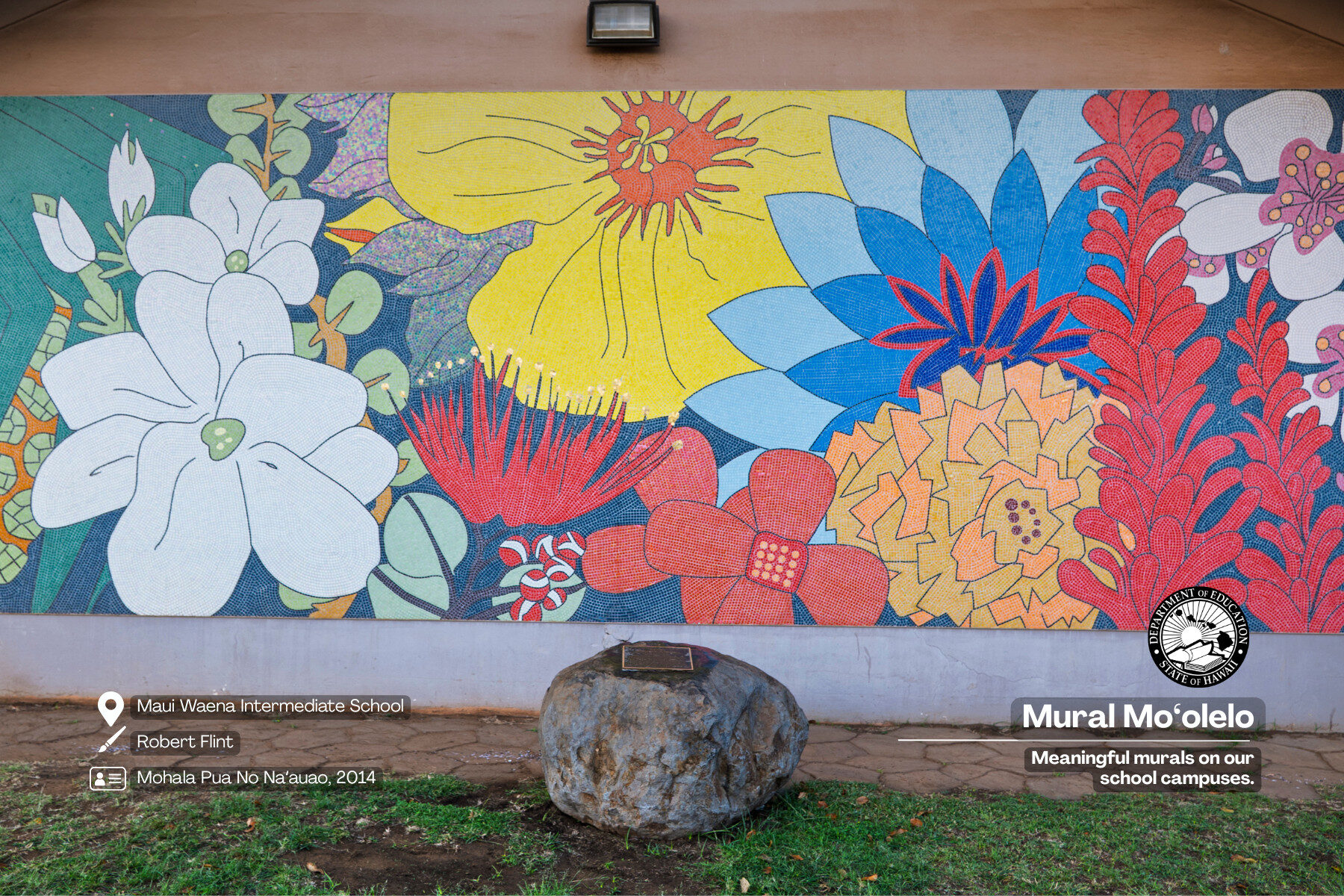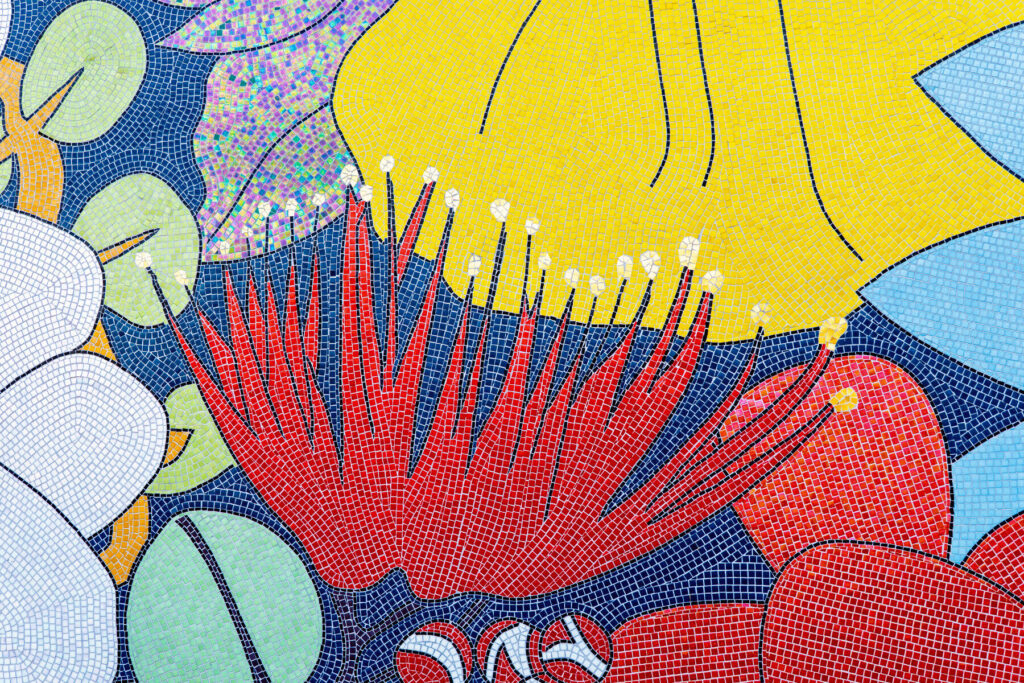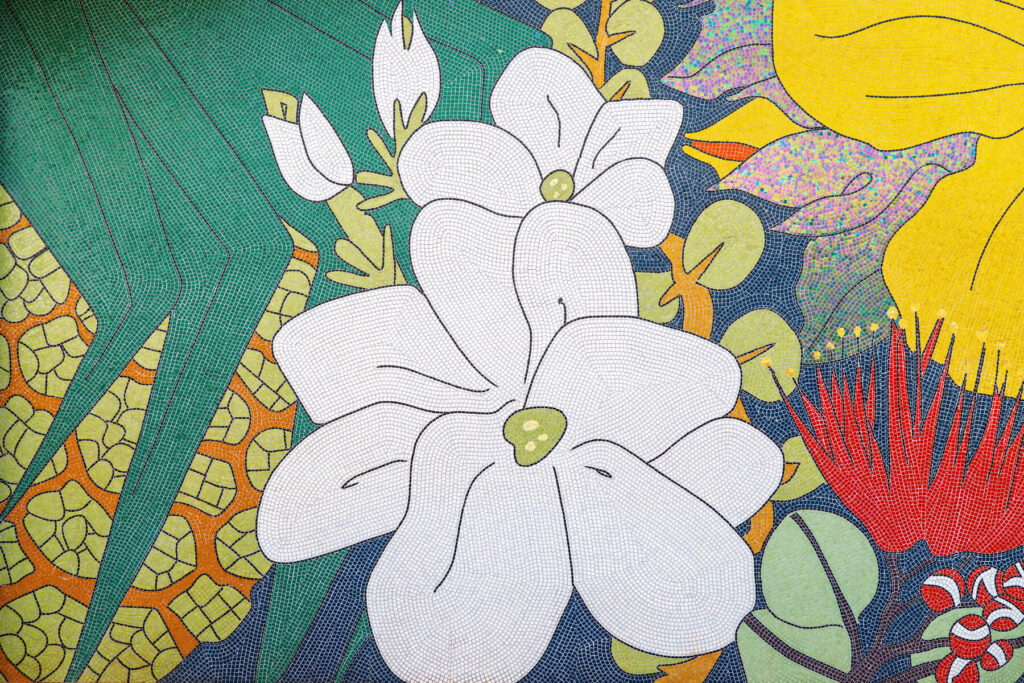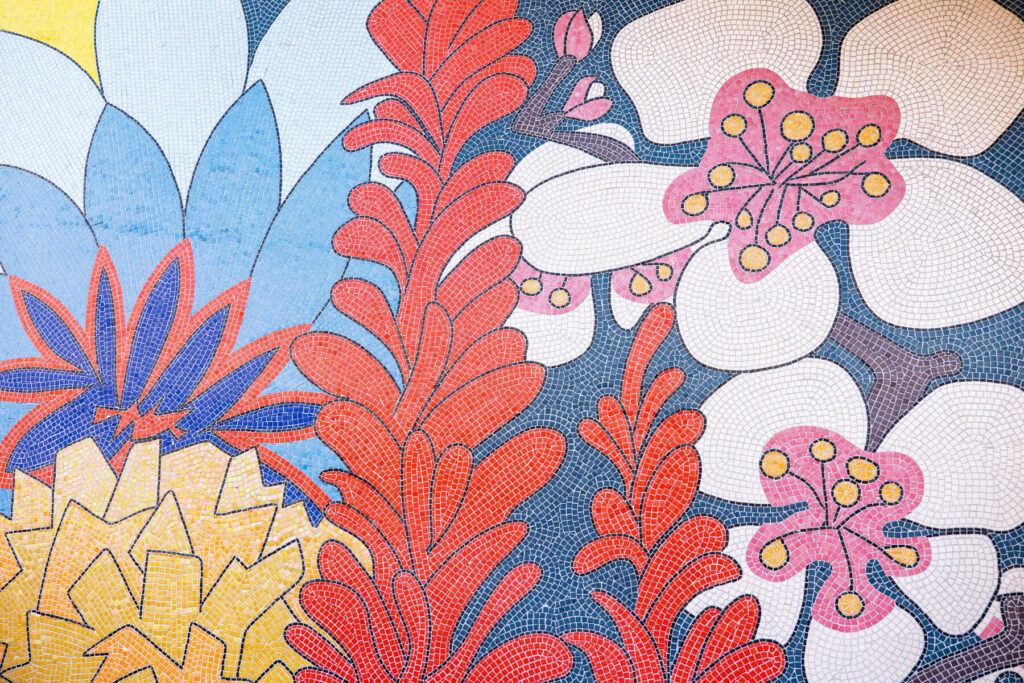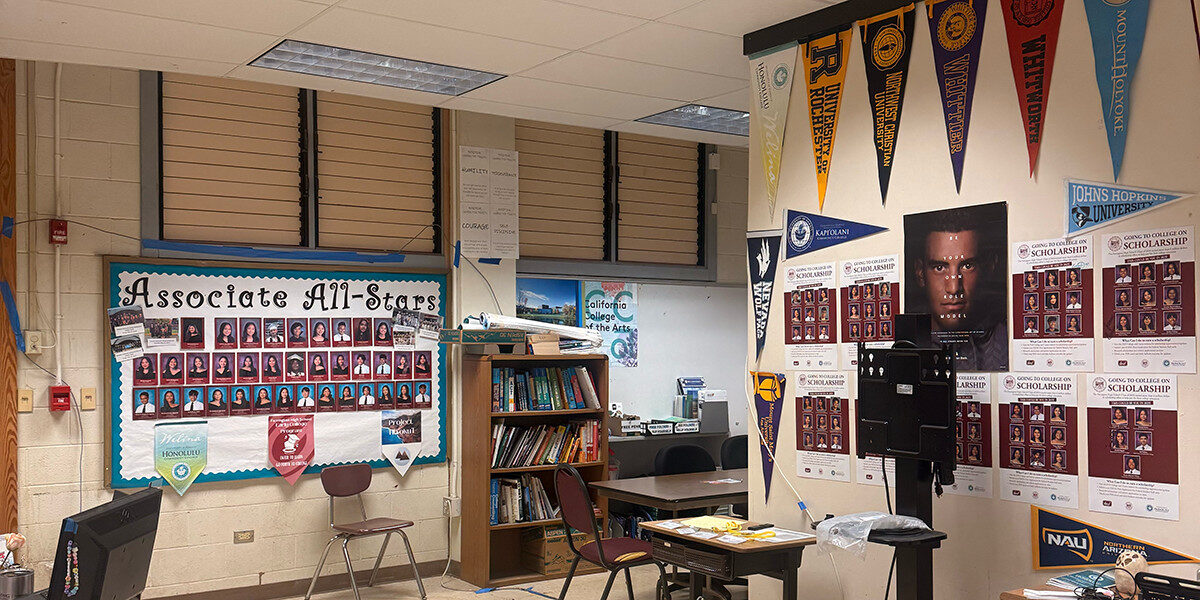Flowers, students and knowledge bloom perennially at Maui Waena Intermediate. The striking large-scale mosaic mural titled “Mohala Pua No Hoʻonaʻauao” cheerfully welcomes visitors and incoming sixth grade students alike.
Accepting differences is one of the values of the school, and a tour of the mural is an integral part of Kumu Marie Biga’s sixth grade Hawaiiana class. According to Kumu Biga, the visit is a launching point to discuss and foster appreciation for classmates from various cultures. Through this experience, she hopes the lesson will set the sixth graders on a positive course at Maui Waena. The mural’s name in English is fittingly, “Through Education, the Children Blossom.”
Kumu Biga was part of the committee that involved students and the State Foundation of Culture and the Arts that worked with the school community to develop the concept for the mural. The students wanted the mural to represent who they were as a school. The result is a harmonious display of blossoms, each representing cultures found in the school and surrounding neighborhoods, and a chart rejoicing the cultural diversity of Maui Waena Intermediate.
Cultures represented in the mural include:
- Hawaiian: The red ohiʻa lehua is the flower selected to represent Hawaiian culture. Legend says that when a lehua blossom is picked, expect rain.
- Mexican: The dahlia is the national flower of Mexico that originated in the mountainous regions. They come in a variety of colors.
- Samoan: Teuila is Samoa’s national flower and is called red ginger in Hawaiʻi. Samoans associate teuila with the sun and fire which are important sources of life and power.
- Tongan: Heilala is Tonga’s national flower and is sacred. Heilala is used to make traditional kahoa (lei).
- Filipino: Sampaguita is the national flower of the Philippines and is known locally as pikake. The name means “I promise you” in Filipino.
- Marshallese: The hala or pandanus was an important plant used in the Marshall Islands.
- Japanese: The sakura or cherry blossom is the national flower of Japan and is known for delicate pink flowers that bloom in spring.
- Chinese: The chrysanthemum is known as one of the Four Gentlemen in Chinese art and represents the season of autumn.
The large, centered yellow hibiscus (aloalo) — which is also the state flower — inclusively represents all of Hawaiʻi’s cultures.
Mohala No Na Pua (Children Blossom ) chant
O keia no ka la
This is the day
E hauoli kakou
Let us rejoice
Mohala no na pua
Children blossom
O ke Kula Maui Waena
At Maui Waena School

